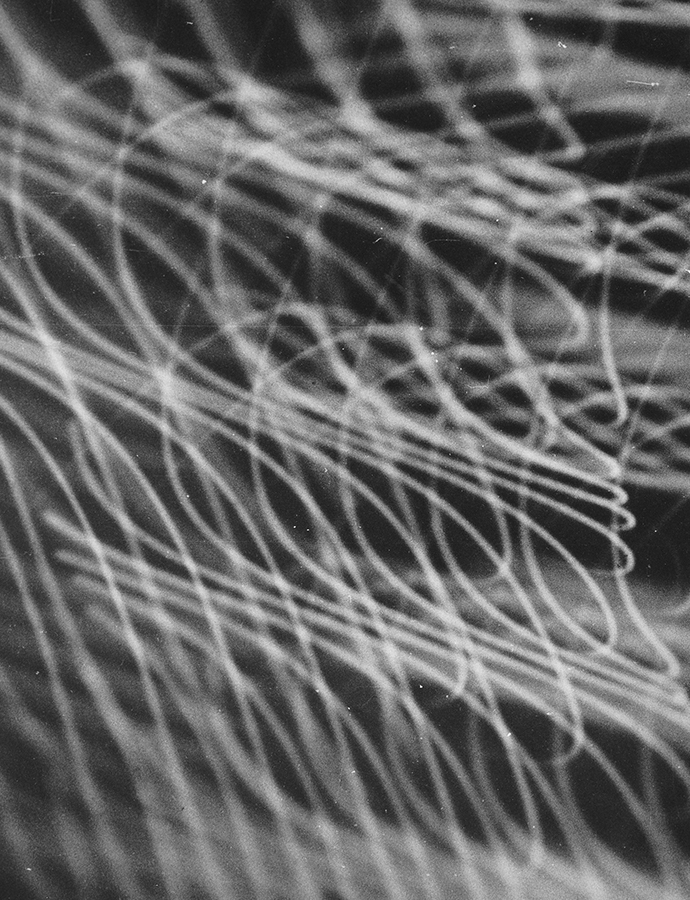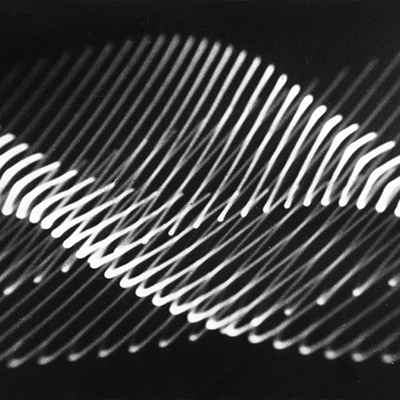

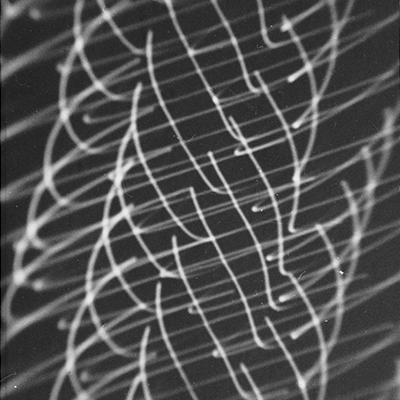

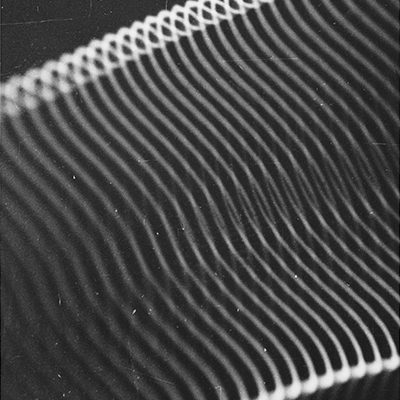











Oscillograms Series (1954-1959)
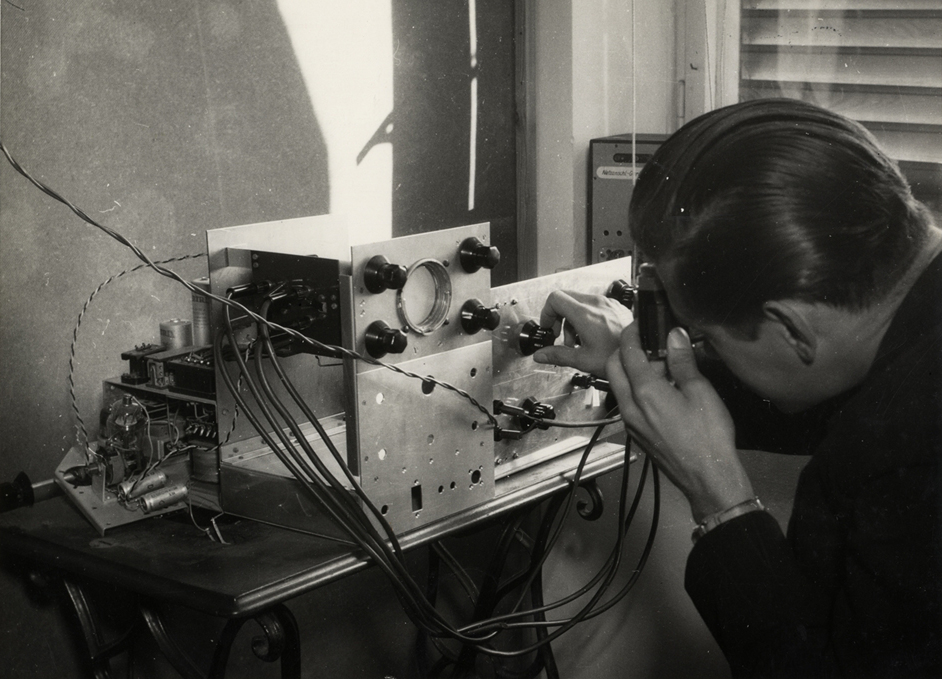

The series Oscillograms, at some times historically also called Pendulum Oscillograms, was created with the help of an analogue computer built by the Viennese physicist and Franke’s study friend Franz Raimann in coordination with Herbert W. Franke, with which the basic arithmetic operations such as addition and subtraction, multiplication and division as well as differentiation and integration could be performed. With this, the graphical elements were developed, mostly curves, combined in two-channel superposition–corresponding to the ordinate and abscissa of areal representations.
The output device was a cathode ray oscillograph borrowed from an electronics hobbyist. On its screen, the calculated configurations appeared drawn in green on a black background, and the shape-determining parameters could be changed interactively and under visual control (series Oscillograms). Since the screen of the oscillograph was only five centimeters in diameter, the area covered by the camera was uncomfortably small. Therefore, for a series of these oscillograms, the camera with black-and-white film was moved past in space with the aperture open in front of the screen during the recording, resulting in a typical fanning out of the basic figure (also named series Pendulum Oscillograms).


